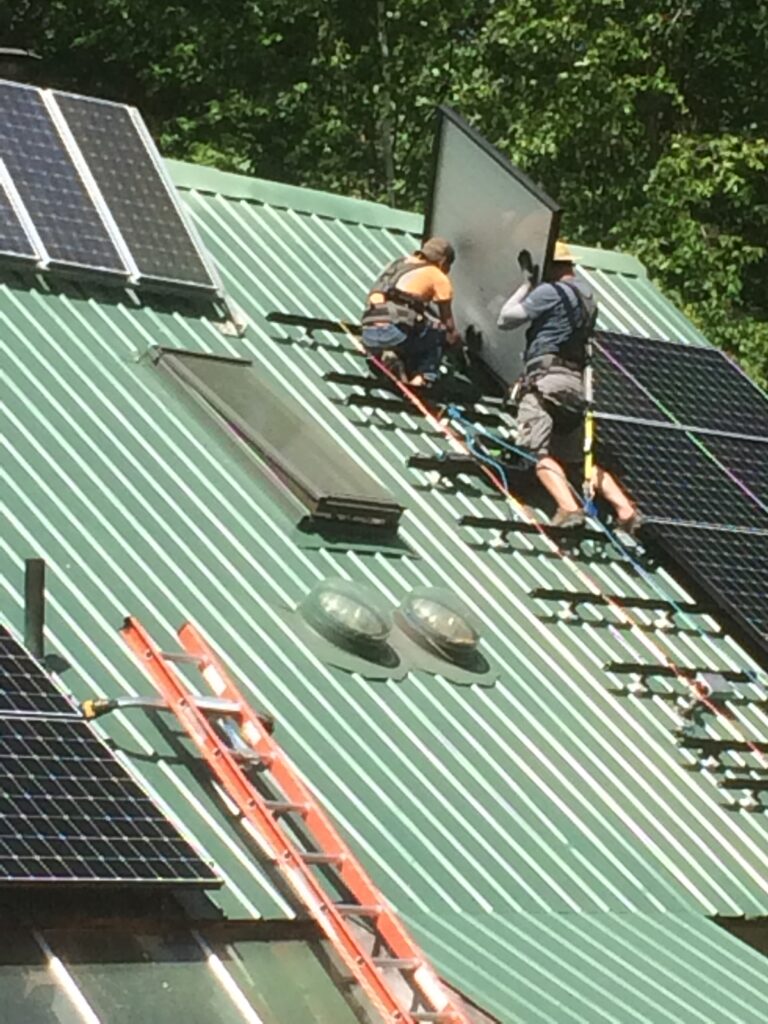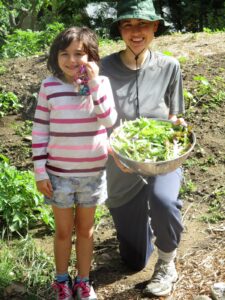 by Aria Killough-Miller
“Can everyone halt?” Brayton asks. We pause from clearing lunch dishes and discussing afternoon tasks. He begins to sing “The Earth is Our Mother”. Having no idea what is going on, we nevertheless follow Brayton, who leads us into the basement toward the solar monitor. He decrescendoes the song to silence, then switches the flip to “On”. And just like that, Agape Community is now documented as running completely on solar power.
Of course, there really is no “just like that” to this story. The community has been running on about half solar power for almost twenty years, since 1999 when Brigid House was first built. The dramatic doubling of kilowatt capacity, with spare energy being sold to repay half the solar installation cost, is a new development in a decades-long history.
by Aria Killough-Miller
“Can everyone halt?” Brayton asks. We pause from clearing lunch dishes and discussing afternoon tasks. He begins to sing “The Earth is Our Mother”. Having no idea what is going on, we nevertheless follow Brayton, who leads us into the basement toward the solar monitor. He decrescendoes the song to silence, then switches the flip to “On”. And just like that, Agape Community is now documented as running completely on solar power.
Of course, there really is no “just like that” to this story. The community has been running on about half solar power for almost twenty years, since 1999 when Brigid House was first built. The dramatic doubling of kilowatt capacity, with spare energy being sold to repay half the solar installation cost, is a new development in a decades-long history.

Granddaughter Olivia with intern, Aria and Agape vegetables
